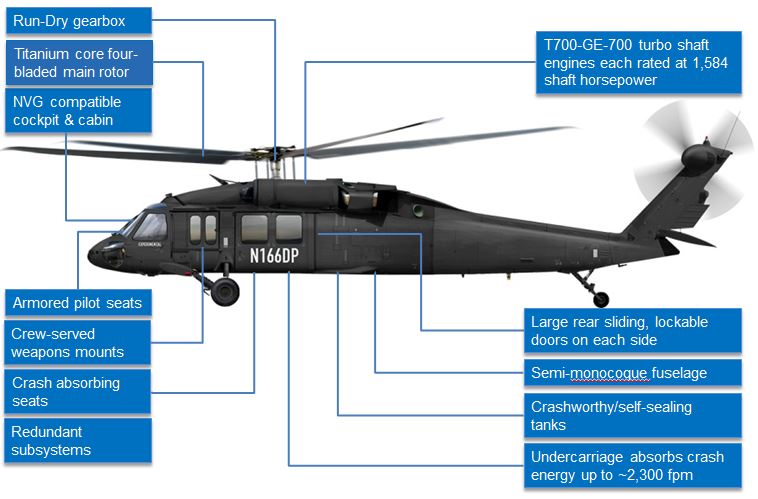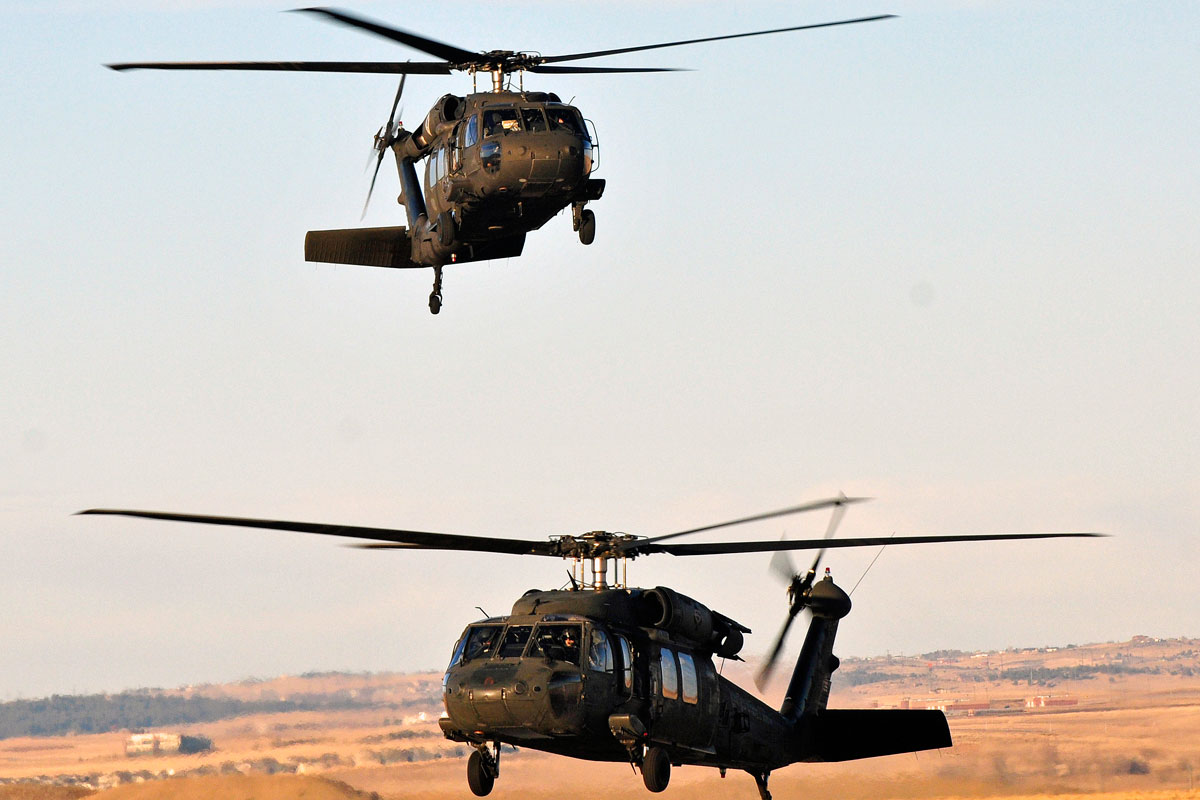UH 60 Helicopter Maintenance: A Comprehensive Overview for Pilots
UH 60 Helicopter Maintenance: A Comprehensive Overview for Pilots
Blog Article
Recognizing the Mechanics and Engineering Behind Uh 60 Helicopters
The UH-60 helicopter, generally understood as the Black Hawk, stands as a peak of modern rotorcraft technology, embodying a blend of durable engineering and complex technicians. As we peel off back the layers of the UH-60's design, a globe of intricate systems and precise design comes to light.
History of UH-60 Helicopters
The history of UH-60 helicopters traces back to the late 1970s when the United States Army looked for a flexible and advanced utility helicopter to change its aging fleet. In feedback to this need, the Sikorsky Aircraft Firm established the UH-60 Black Hawk helicopter. Presented in 1979, the UH-60 promptly became a staple in army operations because of its excellent capabilities.
The UH-60 was created to stand out in a range of missions, including army transportation, medical evacuation, electronic war, and special operations. Its capability to adjust to various functions made it a beneficial asset to the united state Military and other military pressures around the globe
Over the years, the UH-60 platform has gone through numerous upgrades and variations to boost its performance and equal developing objective demands. These helicopters have seen considerable solution in conflicts such as the Gulf War, Afghanistan, and Iraq, showcasing their integrity and versatility in diverse operational environments. The UH-60's rich background is a testament to its enduring tradition as a leading energy helicopter.

Engine and Power Systems
Using sophisticated propulsion technology, UH-60 helicopters are outfitted with innovative engine and power systems to make certain optimal efficiency and reliability in a series of functional circumstances. The UH-60, generally called the Black Hawk, is powered by 2 General Electric T700-GE-701D engines, each efficient in supplying up to 1,940 shaft horsepower. These turboshaft engines offer the required drive for the helicopter to perform its missions effectively, consisting of army transport, clinical evacuation, and fight support.

Rotor System and Aerodynamics
Just how do the rotor system and the rules of aerodynamics of UH-60 helicopters add to their operational efficiency and trip abilities? The blades system of the UH-60 helicopter plays a crucial duty in giving lift and propulsion. The UH-60 features a four-bladed, completely articulated rotor system that enables high ability to move and stability during flight. This design enables the helicopter to perform a large range of missions, from transportation and medical evacuation to deal with procedures.
The rules of aerodynamics additionally play a crucial function in the performance of UH-60 helicopters. The streamlined fuselage and blades blade style minimize drag, enabling the helicopter to accomplish higher speeds and much better fuel performance. The aerodynamic layout of the UH-60 also visit adds to its ability to operate in varied environmental problems, consisting of hot temperature levels and high elevations.
Avionics and Flight Control Solution

In its complex sychronisation with the rotor system and aerodynamics of UH-60 helicopters, the avionics and trip control systems develop an important network of modern technologies shaping the airplane's functional abilities. Avionics incorporate the digital systems utilized for communication, navigating, and keeping an eye on different aircraft features. In the UH-60, these systems consist of digital display screens, interaction radios, GPS navigating, weather radar, and autopilot systems. These avionics systems give vital details to the pilots, enhancing situational recognition and guaranteeing risk-free and reliable operation of the helicopter.
The trip control systems of the UH-60 are accountable for converting the pilot's inputs right into the proper changes he said to the rotor system, ensuring stable flight and ability to move. These systems include hydraulic actuators, servos, and computer systems that function with each other to manage the tail and major blades, in addition to various other flight control surfaces. By specifically managing the helicopter's trip dynamics, these systems make it possible for pilots to perform a large range of objectives, from transportation and search-and-rescue to deal with procedures, with accuracy and confidence.
Duty and Applications in Aviation
Avionics systems in UH-60 helicopters include an array of electronic systems that aid in navigation, interaction, surveillance, and regulating numerous aircraft features. These systems consist of digital display screens, autopilot systems, communication radios, General practitioner navigation devices, and climate radar. Furthermore, these systems include security functions such as auto-pilot modes, surface awareness cautioning systems, and security enhancement systems to enhance the total safety and security and operational abilities of the UH-60 helicopters in different goals, including troop transport, clinical discharge, search and rescue, and airborne firefighting.
Conclusion
Finally, the UH-60 helicopter is a functional aircraft with a rich history and advanced design. Its engine and power systems, blades system, aerodynamics, avionics, and flight control systems all work with each other to make it a trusted and effective device. The UH-60's function and applications in aviation are huge, varying from armed forces procedures to look and save goals. Its proceeded growth and usage show its go right here relevance in the area of aviation (uh 60).
In its detailed control with the blades system and the rules of aerodynamics of UH-60 helicopters, the avionics and trip control systems create a vital network of technologies shaping the aircraft's operational capabilities.The trip control systems of the UH-60 are liable for equating the pilot's inputs into the appropriate changes to the blades system, making sure steady flight and ability to move. Avionics systems in UH-60 helicopters include a variety of electronic systems that help in navigation, communication, surveillance, and managing different airplane features. Furthermore, these systems incorporate safety and security functions such as autopilot modes, surface recognition warning systems, and stability enhancement systems to enhance the general safety and functional abilities of the UH-60 helicopters in various goals, including army transportation, medical discharge, search and rescue, and aerial firefighting.
Its engine and power systems, blades system, the rules of aerodynamics, avionics, and flight control systems all function together to make it a reliable and effective device.
Report this page